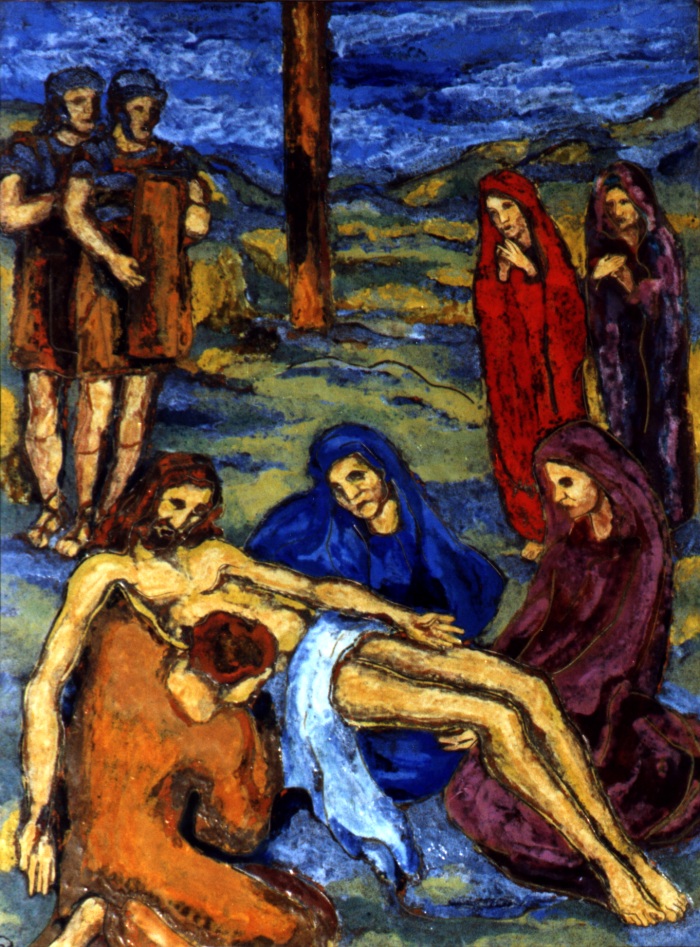"Alas, for those that never sing,
but die with all their music in them!"
AUTHOR: Oliver Wendell Holmes

MEANING OF THE QUOTE:
"It is sad when a person has no
musical outlet for their emotions."
COMPOSER
Following his early departure from the opera
stage in 1829, besides chamber music
Gioachino Rossini composed only larger
scored works of church music. The Stabat
Mater, the title of a 13th century Latin hymn
meaning "the Mother was standing," is among
these. He composed it in two different phases
between 1831 and 1841 and it received its
premiere in Paris in 1842.

The extreme solemnity of this Latin thirteenth-
century text, a devotional poem consisting of
20 couplets about the Virgin Mary’s grief-
stricken vigil at the foot of the Cross ("The
could not be in greater contrast to the
prevailing mood of much of the music, which
at times seems completely incongruous.
Rossini brushed aside any such criticism,
referring to himself as "a musical simpleton,"
and casting doubt on music's ability to
communicate any specific emotion. Most
important of all, he declared, was that the
music should be of the finest quality. In that
he must surely be judged successful, for the
Stabat Mater is full of glorious music.

This famous hymn, the Stabat Mater, has
inspired many musical settings by composers
including illustrious names such as



Pergolesi, Joseph Haydn, Dvorak,
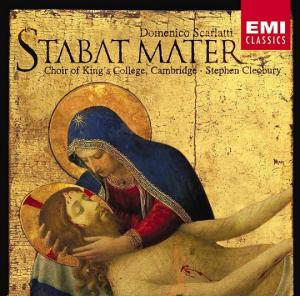

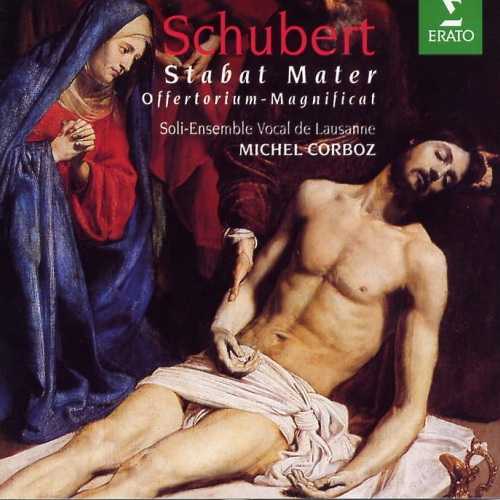
Dominico Scarlatti, Vivaldi, Schubert, and Verdi.

In 10 movements Rossini unites
different forms such as aria, duet,
quartet and chorus, an operatic aria-
like style of writing as well as a strict a
capella style resulting in one of the
highpoints of this genre.
Claudio Scimone, Conductor
The Ambrosian Singers
I Solisti Veneti
 |
| http://www.robmacdonnelldesign.com/ stained-glass/st-hugues-windows |
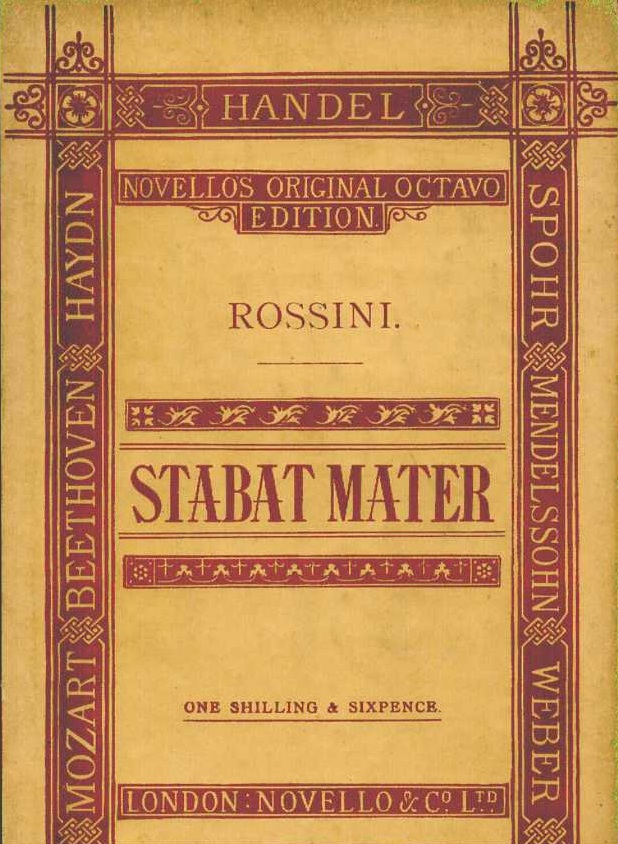
I. Introduction/Chorus and Quartet
1. Introduzione - Stabat mater
Stabat Mater dolorosa / The grieving Mother stood
juxta crucem lacrimosa, / beside the cross weeping
dum pendebat Filius. / where her Son was hanging.
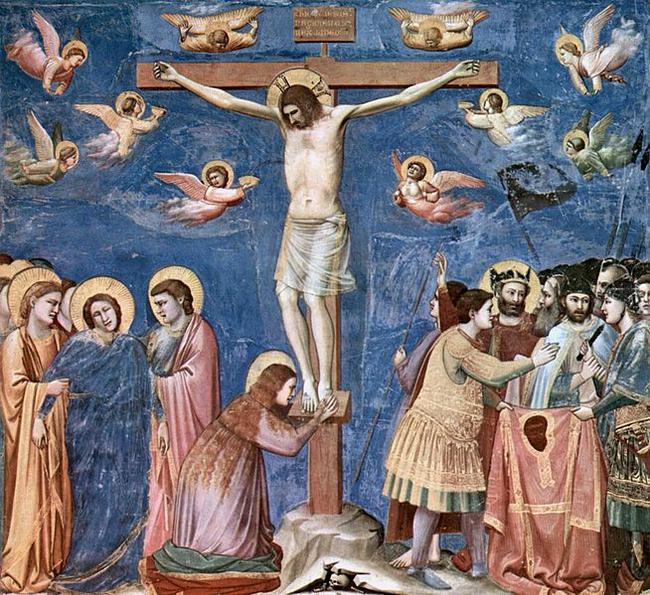 |
| Giotto di Bondone |
II. Aria (Tenor)
2. Aria: Cujus animan (tenor) 9:01
Cuius animam gementem / Through her weeping soul,
contristatam et dolentem / compassionate and grieving,
Per transivit gladius. / a sword passed.
O quam tristis et afflicta / O how sad and afflicted
fuit illa benedicta / was that blessed
Mater Unigeniti! / Mother of the Only-begotten!
Quae maerebat et dolebat / Who mourned and grieved,
Et tremebat, dum videbat / and trembled, as she witnessed
nati poenas incliti! / the torment of her glorious Son.
| Rogier van der Weyden |
III. Duet (Soprano I & Soprano II)
3. Duetto: Quis est homo (soprano I&II) 14:41
Quis est homo, qui non fleret, / Who is the man who would not weep
Christi Matrem si videret / if seeing the Mother of Christ
in tanto supplicio? / in such agony?
Quis non posset contristari, / Who would not be have compassion
piam Matrem contemplari / on beholding the devout mother
dolentum cum Filio? / suffering with her Son?
 |
| Mater Dolorosa with Open Hands |
IV. Aria (Bass)
4. Aria: Pro peccatis (bass) 20:43
Pro peccatis suae gentis / For the sins of His people
vidit Jesum in tormentis / she saw Jesus in torment
et flagellis subditum! / and subjected to the scourge.
Vidit suum dulcem Natum / She saw her sweet Son
moriendo desolatum, / dying, forsaken,
V. Chorus & Recitative (Bass)
5. Recitativo: Eja mater (bass & chorus) 24:49
Eia, Mater, fons amoris, / O Mother, fountain of love,
me sentire vim doloris / make me feel the power of sorrow,
fac ut tecum lugeam. / that I may grieve with you.
Fac ut ardeat cor meum / Grant that my heart may burn
in amando Christum Deum / in the love of the Lord Christ
VI. Quartet
6. Quartetto: Sancta mater 29:02
Sancta mater, istud agas, / Holy Mother, grant this of yours,
Crucifixi fige plagas / that the wounds of the Crucified be well-formed
cordi meo valide. / in my heart.
Tui Nati vulnerati / Grant that the punishment of your wounded Son,
tam dignati pro me pati / so worthily suffered for me,
poenas mecum divide. / may be shared with me.
Fac me vere tecum fiere / Let me sincerely weep with you,
Crucifixo condolere, / bemoan the Crucified,
donec ego vixero! / for as long as I live.
Juxta crucem tecum stare / To stand beside the cross with you,
Te libenter sociare / and for me to join you
in planctu desidero. / in mourning, this I desire.
Virgo virginum praeclara, / Chosen Virgin of virgins,
mihi jam non sis amara; / to me, now, be not bitter;
fac me tecum plangere. / let me mourn with you.
![[Pieta+by+El+Greco.jpg]](https://blogger.googleusercontent.com/img/b/R29vZ2xl/AVvXsEiNib5MnvO-mvyjBI1jh6jabMb9ZzJkVVSU5GBMe0D1s2d_T2anZA7MsT6GWJdWu_xwt-szwf2vlX0Vq4zNtb0kZWhMNx2aHRhqeKvYqayUiV2fqH44cfQ-RBznHRTXq25-jV4AyS8B_iE/s640/Pieta+by+El+Greco.jpg) |
| El Greco: La Pieta |
VII. Cavatina (Soprano II)
7. Cavatina: Fac ut portem (soprano II) 35:03
Fac ut portem Christi mortem, / Grant that I may bear the death of Christ,
passionis fac consortem / Let me share His torments with Him
et plagas recolere! / and the remembrance of His wounds.
Fac me plagis vulnerari, / Let me be wounded with distress,
cruce hac inebriari / and through this cross, let me be filled
Ob amorem Filii. / with love for your Son.
 |
| Luis de Morales: Mater Dolorosa |
VIII. Aria (Soprano I and Chorus)
8. Aria: Inflammatus et (soprano I & chorus) 39:51
Inflammatus et accensus / Lest I be destroyed by fire, set alight,
per te, Virgo, sim defensus / then through you, Virgin, may I be defended
in die judicii. / on the day of judgment.
Fac me cruce custodiri, / Let me be guarded by the cross,
morte Christi praemuniri, / fortified by the death of Christ,
IX. Quartet
9. Quartetto a cappella: Quando corpus 43:32
Quando corpus morietur, / When my body dies,
fac ut animae donetur / grant that to my soul is given
paradisi gloria. / the glory of paradise.
 |
| Andrea Da Firenze: Descent of Christ to Limbo |
10. Finale: In sempiterna saccula (chorus) 49:19
In sempiterna saecula. / World without end.
Amen. / Amen.
 |
| Michaelangelo: Pieta |
LINKS
http://voxamadeusnewsletter.blogspot.com/2014/04/april-e-newsletter-rossini-mozart.html
http://paulthomasonwriter.com/gioachino-rossini-stabat-mater/
http://www.carus-verlag.com/index.php3?selSprache=1&BLink=KKArtikel&ArtNummer=7008900
http://www.grantparkmusicfestival.com/uploads/pdf/July_20-21_Rossini_Stabat_Mater.pdf
http://www.sydneysymphony.com/media/81889/PROG14_070517_Rossini_SSO.pdf
http://www.choirs.org.uk/prognotes/Rossini%20Stabat%20Mater.htm
http://www.directoryofchoralmusic.co.uk/resources/files/
prognotes/Rossini%20-%20Stabat%20%20Mater.pdf
http://www.liverpoolphil.com/download.php?id=1801
https://secureca.imodules.com/s/965/Alumni.aspx?sid=965&gid=10&pgid=1097
http://www.talkclassical.com/21258-rossini-stabat-mater.html
http://nepr.net/music/2014/11/26/stabat-mater-
young-composers-explore-an-ancient-text/
http://campus.udayton.edu/mary/resources/poetry/stbmat.html
http://paulthomasonwriter.com/gioachino-rossini-stabat-mater/
http://www.carus-verlag.com/index.php3?selSprache=1&BLink=KKArtikel&ArtNummer=7008900
http://www.grantparkmusicfestival.com/uploads/pdf/July_20-21_Rossini_Stabat_Mater.pdf
http://www.sydneysymphony.com/media/81889/PROG14_070517_Rossini_SSO.pdf
http://www.choirs.org.uk/prognotes/Rossini%20Stabat%20Mater.htm
http://www.directoryofchoralmusic.co.uk/resources/files/
prognotes/Rossini%20-%20Stabat%20%20Mater.pdf
http://www.liverpoolphil.com/download.php?id=1801
https://secureca.imodules.com/s/965/Alumni.aspx?sid=965&gid=10&pgid=1097
http://www.talkclassical.com/21258-rossini-stabat-mater.html
http://nepr.net/music/2014/11/26/stabat-mater-
young-composers-explore-an-ancient-text/
http://campus.udayton.edu/mary/resources/poetry/stbmat.html

TEXT
http://www.orsymphony.org/concerts/0910/programnotes/cl11_translation_page.aspx
http://www.sydneysymphony.com/media/81889/PROG14_070517_Rossini_SSO.pdf
https://sites.google.com/site/drtkaufmanartsandmusic/stabat-mater
http://www.northyorkshirechorus.org.uk/pdfs/StabatMaterText.pdf
http://www.sydneysymphony.com/media/81889/PROG14_070517_Rossini_SSO.pdf
https://sites.google.com/site/drtkaufmanartsandmusic/stabat-mater
http://www.northyorkshirechorus.org.uk/pdfs/StabatMaterText.pdf

MUSIC
https://archive.org/details/imslp-mater-rossini-gioacchino
https://musopen.org/sheetmusic/1333/
http://www.learnchoralmusic.co.uk/Rossini/Stabat%20Mater/stab-mat.html
http://blackheathchoirfestival.weebly.com/combined-choir.html
http://www.phoenixchoir.org.au/Music_files/ccf.html
https://musopen.org/sheetmusic/1333/
http://www.learnchoralmusic.co.uk/Rossini/Stabat%20Mater/stab-mat.html
http://blackheathchoirfestival.weebly.com/combined-choir.html
http://www.phoenixchoir.org.au/Music_files/ccf.html







